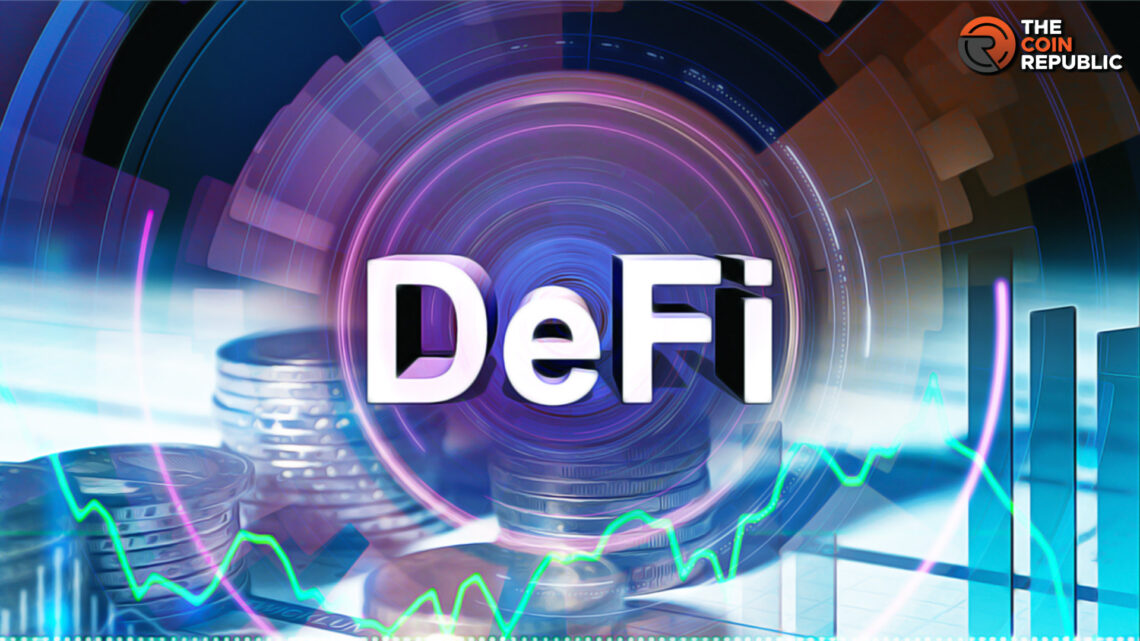- 1 DeFi stands for decentralized finance, revolutionizing the crypto landscape with unique services to ease operations.
- 2 It allows speculative activities in crypto markets, enabling higher returns for users.
- 3 It improves the efficiency of blockchain technology and smart contracts.
DeFi is the most innovative and disruptive trend in the crypto landscape, it offers ways to borrow, lend, trade, save, and invest in digital assets. This innovative concept is making its way into the mainstream landscape of finance and investment.
As per the data available at Statista, the worldwide DeFi sector will experience a significant expansion, with an anticipated approximate annual growth of 15%, leading to a total value of $37,040 million by 2028. Moreover, the expected average revenue per user is close to $1,067. Simultaneously, the user base is expected to reach $22.09 million by 2028.
This decade will witness the widespread adoption of decentralized financial solutions and their transformative impact on traditional financial platforms.
Implementation of DeFi
Decentralized finance is making its way into numerous simple and complex financial transactions. dApps or protocols enable these financial transactions.
Some of the developed use cases of dApps and protocols include:
Traditional Financial Transactions
All kinds of transactions, including payments, trading, securities, and insurance, as well as lending and borrowing, are happening with DeFi platforms.
Decentralized Exchanges (DEX)
Most crypto investors currently use centralized exchanges; however, DEX facilitates peer-to-peer financial transactions. This allows users to maintain control over their funds.
E-wallets
The developers of DeFi are creating digital wallets to facilitate the independent operation of the largest cryptocurrency exchanges and provide investors with access to all the blockchain-based games and cryptos.
Stable Coins
They try to introduce stability in the most volatile crypto market by creating pairs with non-cryptocurrencies.
Yield Harvesting
DeFi allows investors with speculative objectives to lend crypto and receive rewards.
Non-Fungible Tokens (NFTs)
It creates digital assets out of already existing traditional assets or usually from non-tradable assets like videos of slam dunks or the first Tweet on the X platform.
DeFi Trends in 2024 and Beyond
2024 is expected to be a remarkable year for DeFi, as the crypto market is expected to witness some significant trends. The experts have similarly highlighted some of the anticipated trends in the DeFi space.
Beyond Lending and Borrowing
The current year is expected to see a diversification of applications with innovations in:
Tokenization of real-world assets: It will allow access to high-value assets such as real estate and artwork with fractionalized or tokenized ownership.
Market Predictions: It will promote collective wisdom to predict real-world events and develop new investment opportunities.
Decentralized Insurance: It will offer flexible and affordable coverage options built on smart contracts.
Social Impact in Finance: It will enable transparent and efficient fundraising for social causes like renewable energy sources.
Integration with Traditional Finance
The walls or difference between decentralized and traditional finance are narrowing and 2024 is expected to reduce this gap further through:
CBDC: Integration of CBDCs with DeFi protocols can simplify cross-border payments and will open up space for new financial products. However, Trump has recently stated he will not be promoting the creation of CBDC in the USA if he gets elected.
Institutional Adoption: Traditional financial institutions are analyzing DeFi products and services, offering their clients access to this thriving ecosystem.
Regulatory Clarity: Clear guidelines can be introduced to help the regulators gain a better understanding of the platform.
Layer 2 Solutions
In 2024, scalability will also remain a challenge for DeFi. However, analysts expect increased adoption of L2 solutions like scaling chains, sidechains, and optimistic rollups to improve transaction speed and reduce fees.
Focus on User Interface
Non-user-friendly interfaces have made it difficult for users to adopt DeFi. This year, it will focus on improving the user experience.
Intuitive Interfaces: It will simplify DeFi protocols and integrate with familiar financial tools.
Enhanced Security: It will impose security measures and improve risk management tools that can build trust and attract new users.
Educational Resources: It will educate users and allow them to navigate the DeFi landscape safely and confidently.
Rise of DAO: It is emerging as a powerful tool for community-driven governance and fundraising. In 2024, DAO will play a crucial role in managing DeFi protocols, investing and venture capital, and philanthropy and social impact.
Conclusion
DeFi’s journey is a story of strength, adoption, and relentlessness in the future of finance. The DeFi companies are providing distributed financial technologies that are capable of revolutionizing the banking sector and operations. They offer seamless alignment with the key trends and challenges in the DeFi ecosystem.
FAQs
What does the DeFi platform offer?
The DeFi platform offers a group of financial products and services to serve the scattered needs and preferences of investors.
What is the influence of DeFi?
The influence of DeFi on Finance and Investment includes staking its claim as a dynamic force that creates new possibilities and challenges for investors.

Andrew is a blockchain developer who developed his interest in cryptocurrencies while pursuing his post-graduation major in blockchain development. He is a keen observer of details and shares his passion for writing, along with coding. His backend knowledge about blockchain helps him give a unique perspective to his writing skills, and a reliable craft at explaining the concepts such as blockchain programming, languages and token minting. He also frequently shares technical details and performance indicators of ICOs and IDOs.


 Home
Home News
News










